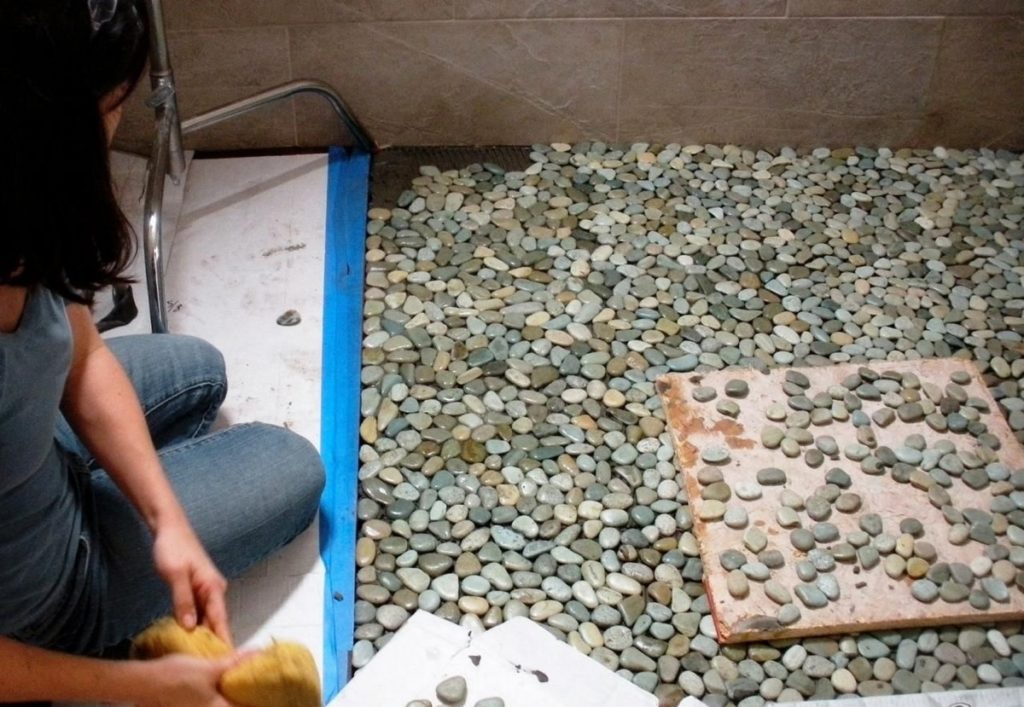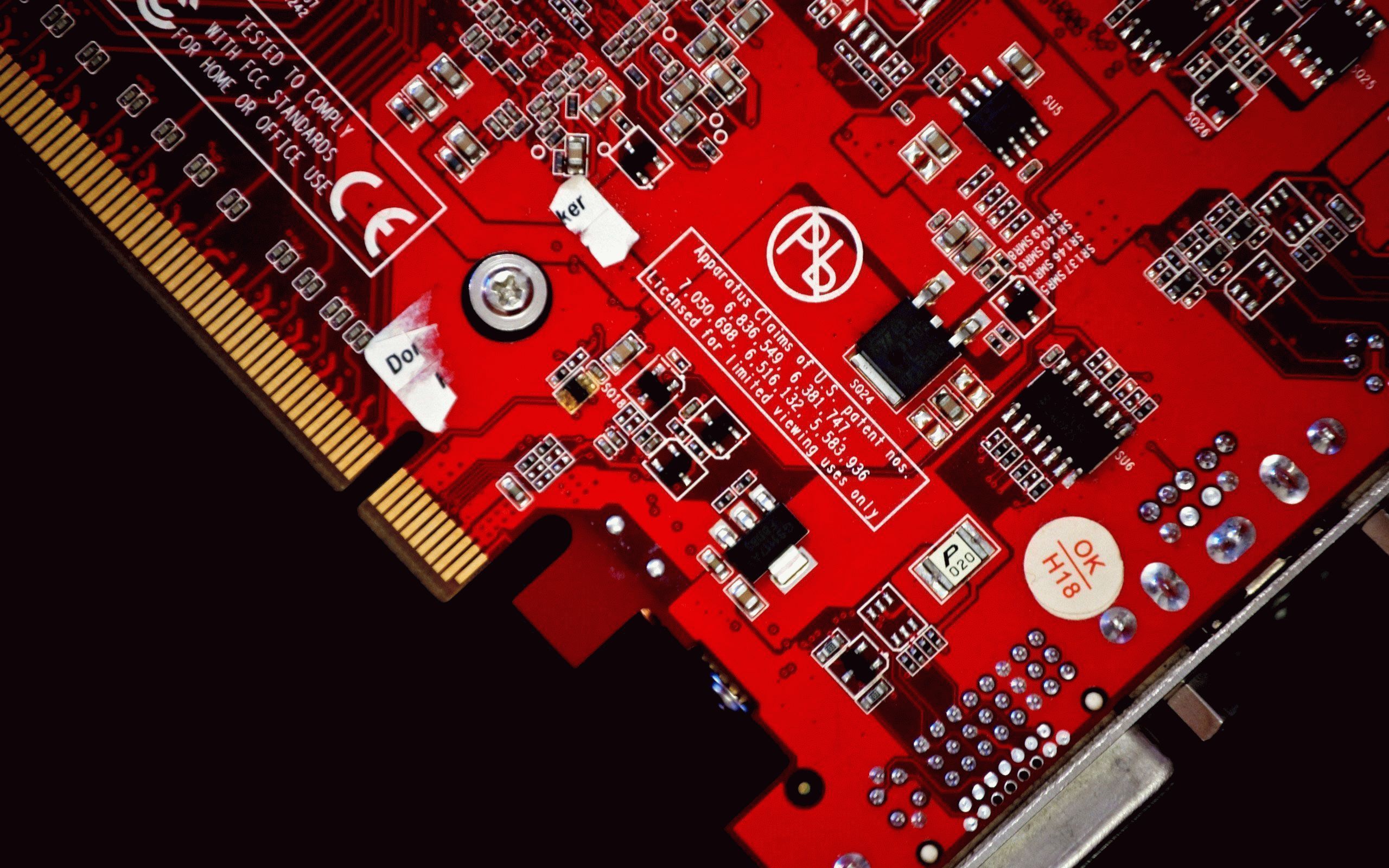Ranking of the best pebble mosaic for 2025

Pebble mosaic, unlike ordinary tiles, can be used to perform a much larger number of artistic solutions. It is possible to veneer various convex bases with this material, and any surface can be given the appearance of a solid stone object with the help of natural pebbles. With a relatively small raw material cost, a designer or customer can create an excellent piece of art in a luxury style. In addition, caring for such a mosaic is very convenient and simple: soot, grease and other contaminants do not adhere strongly to the stone and are perfectly washed out with conventional means. The pebble combines the natural nature and actual ecological requirements which are so necessary for a modern facing stone.

Content [Hide]
- 1 Mosaic pebbles - general information
- 2 Modern types of pebble material
- 3 Advantages and disadvantages
- 4 Applications
- 5 Peculiarities of Pebble Mosaic Techniques
- 6 Features of using pebbles on the grid
- 7 Block mounting technology
- 8 Difficulties of choice
- 9 Ranking of the best pebble mosaic for 2025
- 10 Conclusion
Mosaic pebbles - general information
Pebble elements have long been in demand not only in landscape design, but also popular as mosaic decoration for interior spaces. Basically, they are used to create images and patterns on a marine theme, which favorably emphasizes this particular motif.
The material in question is made on the basis of natural stones, by processing them (or their individual fragments) to the required size, while simultaneously giving them the desired color shades. Most often, a pebble mosaic is made up of individual blocks glued to a fiberglass construction mesh. The applied adhesive substance successfully resists moisture, which allows the laying of pebble ornaments in rooms with high humidity.
The basis of the block is made up of pebbles, which can be of both natural and artificial origin.Natural options can be crushed stone or pebbles, which, after the grinding procedure, acquire the texture of granite, marble, or even mother-of-pearl sea shells. Setting the blocks on a mesh base will allow you to bend and cut the cladding workpiece, adapting it to a specific location without any problems. The surface configuration can be rounded, curvilinear, have sharp corners - any complexity is available for a pebble mosaic.
IMPORTANT! It is not necessary to specially select the geometric dimensions of chips-plates - most often they have a rounded shape, which is why they are best suited for arranging bases with irregular geometry.
Modern types of pebble material
- natural (natural)
In the natural environment, a pebble stone is polished in a natural way - by washing with the waters of a river or other fresh water body, which has a flowing nature of its own waters. This option is the easiest to get and is the most common on the market. The surface of river pebbles is characterized by some roughness.
- Nautical
This variation of pebbles is distinguished by lighter shades, and its surface has a greater smoothness. The average diameter of a sea stone reaches 150 millimeters.
- Ozerny
This variety is a cross between the previous two. Due to the fact that the waters of the lake are stagnant, only one shade of color is inherent in lake pebbles, as a rule, it is dark burgundy or pale blue. And due to the weak mechanical impact on the pebbles of water, it has a more spherical shape than an elongated oval.
- Artificial (decorative)
This material is obtained in the factory and made from natural monolithic minerals such as sandstone, granite, quartz or marble. In such man-made products, the widest color palette that a person artificially applies prevails. However, in terms of its qualitative properties, decorative pebbles will always lose to any natural ones.
Advantages and disadvantages
The pebbles used for laying out mosaics have become widespread due to the presence of some significant advantages:
- Moisture resistance - it is achieved due to the high density and the absence of pores in the material;
- Hygienic, hypoallergenic, environmentally friendly - this mosaic consists entirely of natural monolith;
- Antistatic effect - repels dirt and dust particles;
- Durability and ease of care - you can wash the surface of the ornament with almost any means, without fear of damaging it;
- Resistance to mechanical stress - due to its high density, pebbles are slightly subject to abrasion;
- Simple installation and installation - gluing can be carried out with only minimal experience in the field of finishing work;
- Marine theme - this style can successfully fit into any interior - from classic to hi-tech.
The disadvantages include:
- Weak warming up - pebbles take a long time and high temperatures to warm up, therefore, when using it as a floor covering, it is preferable to simultaneously equip the "warm floor" system;
- The difficulty of removing roughness from the surface - if this operation was not carried out by nature itself, then it is possible to carry it out only in industrial conditions. In everyday life, it will be very difficult to grind each chip plate.
Applications
The type of mosaic under consideration can be successfully entered not only “with an eye” to emphasize the marine theme. Ornaments, patterns and whole images can be installed in residential and industrial premises, and they are also suitable for decorating individual objects, such as columns, arches, wall inserts. In any case, the pebble mosaic will bring essential notes of natural naturalness to the interior. In most cases, it is issued:
- Side podiums of small reservoirs (artificial ponds);
- Internal parts of semi-arches or columns;
- Skirting boards in bathrooms, baths, pools and bathrooms;
- Floor coverings (only samples with a rough surface);
- Working areas of kitchens ("aprons");
- Full-fledged wall panels or ornaments;
- Pedestrian paths in the "summer gardens".
Peculiarities of Pebble Mosaic Techniques
A block pebble mosaic placed on a grid has a lot of practical (for example, accelerated laying) and aesthetic qualities, which fully justifies the financial resources spent on it. Due to its natural origin, this material guaranteed complete environmental safety, so it can be finished even in rooms where children or people prone to allergic reactions stay. At the same time, the strength of the stone ensures the reliability of laying and the overall durability of use - it is characterized by resistance to premature abrasion, successful resistance to moisture and temperature fluctuations. All of the above qualities make it possible to use this type of decorative mosaic in the following three main areas:
- Decorating with a mesh method - this option is the fastest installation method and is especially suitable for those buyers who buy mosaic material in bulk and who need to decorate large-scale areas. Pebbles of a certain size are already sorted and placed on fiberglass mesh blocks, and if necessary, patterns and images (or parts of a large picture-panel) are created from them. The grid base securely holds all the small elements and is perfectly placed on bases with any geometry. Also, the mesh material can always be cut with simple scissors in order to obtain a fragment of the desired size and shape.
- Decorating with a tiled method - in this case, a reinforcing mesh is already used, on which the chips-plates are attached using a cement composition. On top of such a tile, a pattern of stones of one or more colors can be applied, and a strong cement composition adheres them to the base. Such tiles are not suitable for laying on uneven surfaces, but are able to provide maximum adhesion reliability.
- Decorating by piece inlay - this method is a painstaking work of laying out ornaments or images, using each plate separately. However, this method has the widest scope for the implementation of design ideas. With its help, it is convenient to create an original design for bar counters, small areas in small architectural forms (arbors), etc.
Features of using pebbles on the grid
Modern mosaic pebble products are characterized by many natural shades:
- Pink;
- Yellow;
- Beige;
- Blue;
- Grey.
In their form, individual elements can be flat, spherical, elongated and even amorphous. To make a classic panel based on them, such chips are placed on edge or heated in a solution. And if you use a special "Interlocking" system, you can successfully disguise conspicuous joints. The considered type of design is considered quite new and was initially recognized exclusively by connoisseurs of eco-interior styles. However, today it has already received sufficient distribution. The mesh form can be used for both external and internal decoration. Nautical theme displays will be more appropriate for showers and bathrooms, where stones of various colors and sizes can be used. Such panels will correspond as closely as possible to the purpose of the room.
Block mounting technology
The whole essence of the process is not particularly complicated. It consists in laying tiles with standard parameters of 30 x 30 centimeters, by adding them to ordinary tile adhesive. As a rule, one such plate contains up to 60 polished chips-fragments. During installation, clearly visible seams may occur between the fragments, which will require subsequent grouting.
For installation work, you will need the following tools:
- Finishing blocks themselves;
- Adhesive composition;
- Primer;
- Grout;
- Varnish (water repellent);
- Spatulas (metal and rubber);
- Ordinary sponge for wiping surfaces;
- Construction knife.
The whole procedure will include several stages:
- Preparation of the working base by leveling the rough surface with a cement screed and filling large cracks and crevices;
- When facing surfaces in rooms with a high humidity regime, it is necessary to treat the surface with bituminous mastic for waterproofing purposes (laying rolled material can be an alternative);
- Try on the blocks to the place of their future location (if necessary, trim);
- Prepare the adhesive substance in the proportions recommended by the manufacturer, stirring to a homogeneous consistency;
- Using a notched trowel, apply glue to the surface (the layer thickness should be no more than one and a half centimeters, starting from the farthest corner);
- Place the block, at the same time trimming it on the sides and pressing it down with a piece of plywood for recessing in the adhesive layer;
- Dock the next block with the previous one, focusing on the coincidence of the parts of the pattern or ornament - fix it with pressure;
- At the end of laying out - fill large voids with small pebbles;
- Wait for the entire layout to dry (from 24 to 48 hours);
- After drying, fill the inter-joint spaces with grout using a rubber spatula;
- Wet the sponge and remove excess solution from the surface of the entire mosaic;
- Allow the grout to dry for 24 hours.
- Finally remove the dried excess grout mechanically;
- Apply a hydrophobic solution to the mosaic surface in order to protect the overall pattern from moisture and make it more aesthetic.
IMPORTANT! Caring for pebble mosaics is the same as caring for ceramics. Washing is carried out using standard detergents. To preserve the decorative properties, it is recommended to rub the coating with a wax-containing composition once every 60 days.
Difficulties of choice
Before buying a pebble mosaic, you should pay attention to a number of important points:
- In form, all chips should be in harmony with each other. Some roughness from the sides is allowed, but this should not expand the spacing between the seams.
- The durability of the product and its presentable appearance will directly depend on the quality of the fiberglass from which the mesh base is made. The mesh should be easily cut, but not worn out during prolonged mechanical stress. The best material for this structural element will be polyurethane, which has the proper degree of strength and flexibility. The worst option is the usual gauze mesh base, because the threads are subject to the negative effects of moisture and decay over time.
- The thickness (height) of each chip - it should be approximately the same level for all elements. As a rule, the chip, on which all other stones in the block are aligned, is set in the middle. It is worth noting that there should not be very high elements along the edges of the block.
- The pebble material is characterized by a uniform color of all elements, if we are not talking about sea stone, which is used for colorful paintings and multi-colored panels.
- The commonality of texture and texture - it must match the style of the surrounding interior of the room.
- Exterior Surface Condition - Unless special roughness is required (which is needed for flooring), then the surface of each chip should be perfectly smooth and sanded.
- The quality of fastening of all elements of the block to the grid - not a single chip should sag or come off easily;
- The presence of domestic-style certificates for goods - the existence of such documents will be another confirmation of quality and will save the buyer from acquiring a fake.
Ranking of the best pebble mosaic for 2025
Budget segment
3rd place: "Mozaika MS-WB1"
votes 0
This product is intended for finishing walls and floors in bathrooms, hamams, it can also be used for repairs inside and outside buildings, suitable for facing terraces. The material from which the product is made is a natural stone assembled on a grid. The product goes well with other finishing materials: natural and artificial marble, wood, tiles, glass. The recommended cost for retail chains is 500 rubles.

- Excellent surface finish
- Practical installation on fiberglass mesh;
- Adequate price.
- Not detected.
2nd place: "Mozaika MS00-5HP"
votes 0
This model is distinguished by a variety of colors, and it is made on the basis of river stone. All fragments are carefully selected and have a relatively uniform size. Block laying involves the use of mesh, which is very easy to cut in order to reduce the size. Due to its heterogeneity, it is preferable to use the model as a finishing material for small architectural forms. The recommended cost for retail chains is 550 rubles.

- Simple and strong fastening;
- Large fragments of a rounded shape;
- Ease of placement.
- Not detected.
1st place: "Mozaika MS00-2M matt"
votes 0
This product is assembled on the basis of a lake stone, as evidenced by its monochromatic coloring. Based on it, it will be practical to lay out footpaths in the "winter garden". The surface of each chip is perfectly polished and covered with a moisture-resistant varnish, which will allow the product to last for a long period of time. The recommended cost for retail chains is 570 rubles.

- High quality solid color
- Using a rare lake stone;
- Protective lacquer.
- Not detected.
Middle price segment
3rd place: "Mozaika MS00-1 BCP"
votes 0
This product has a factory treatment and is specially oriented for finishing floor coverings in rooms with high humidity. The original raw material is of marine origin. Through industrial grinding, it was possible to achieve a perfectly even surface for each chip, while not a single element has lost its natural color. The recommended cost for retail chains is 650 rubles.

- Perfectly flat surface
- Industrial grinding;
- Decent combination of price and quality.
- Narrow specialization (for flooring).
2nd place: "Mozaika MS00-3HP matt"
votes 0
Another model assembled on the basis of lake stone, factory polished. Lacquered, optimally positioned on the fiberglass grid. The rounded shape of each chip allows the mesh to be perfectly fixed on any curved surface up to the base with sharp corners. If necessary, any block can be cut to the desired shape and size. The recommended cost for retail chains is 655 rubles.

- Clear and uniform dark color;
- Possibility of modification of each block;
- Round shape of each chip.
- Not detected.
1st place: "Bonaparte Black Jack 30508"
votes 0
Such a product is perfect for decorating a fireplace hall or room and will allow it to elegantly fit into any interior due to its own dark matte surface.The laying process will not be difficult, almost any adhesive base will do, and the drying time will not exceed 36 hours. However, due to the presence of a shiny matte surface, various impurities can concentrate on the product, which requires a more thorough and periodic maintenance process. The recommended cost for retail chains is 700 rubles.

- Matte coating;
- Harmonious combination with classic interiors;
- Easy installation.
- Requires more care.
Premium class
3rd place: "Intermatex Perla Multicolor 30×30"
votes 0
This sample already belongs to the category of expensive material and is produced by a well-known Spanish brand. Although the product uses a single-color lake stone, it is subjected to a special heat treatment, in special cases - additional coloring, and at the end it is covered with a special varnish. It is easy to see that all elements are carefully polished and the manufacturer tries to fit them to the same volume. The recommended cost for retail chains is 1800 rubles.

- Quality processing of each chip;
- Tinting elements to the desired tones;
- Giving elements a standardized form.
- Somewhat overpriced.
2nd place: "L`antic colonial Mosaics Collection L152901001 Paradise Baia Stone Blanco"
votes 0
An excellent example of a mosaic with a standard shade. Perfect for decorating the kitchen, living room or bathroom. The surface of the chips-plates is properly polished and protected with an anti-slip coating, which allows the use of this product as a floor covering. Joint distances are kept to a minimum and do not require careful grouting.The recommended cost for retail chains is 2130 rubles.

- Classic shape;
- Minimum distance between seams;
- Traditional lake shade.
- Not detected.
1st place: "L`antic colonial Mosaics Collection L108006581 Paradise Baia Stone Cremas"
votes 0
This product is made in Spain on the basis of river stone, as evidenced by small veins on individual elements of the block. With the help of block laying, this material can be faced with almost any surface, both inside and outside. The mounting mesh is made of durable polyurethane, which will last a long time. The recommended cost for retail chains is 2200 rubles.

- Quality product from a Spanish brand;
- Durable polyurethane mesh base;
- Versatility of application.
- Overcharge.
Conclusion
Pebble mosaics are famous for their versatility - they can be mounted on almost any base, and they will look appropriate in any interior - both as a type of general decor and as a separate art object. On their basis, it is possible to create a full-scale panel, because nature provides enough variations of colors. Tones and gradients of natural pebble stone are very diverse - they can contain the whole range of amber, gray or olive, emerald or black, white and beige, not excluding many others. A mosaic art object based on a decorative panel will prove to be a practical acquisition even from an applied point of view.The structure of the pebble has no pores, respectively, its water resistance reaches the full 100%, and not every mosaic can boast of such qualities.
new entries
Categories
Useful
Popular Articles
-

Top ranking of the best and cheapest scooters up to 50cc in 2025
Views: 131656 -

Rating of the best soundproofing materials for an apartment in 2025
Views: 127697 -

Rating of cheap analogues of expensive medicines for flu and colds for 2025
Views: 124524 -

The best men's sneakers in 2025
Views: 124041 -

The Best Complex Vitamins in 2025
Views: 121945 -

Top ranking of the best smartwatches 2025 - price-quality ratio
Views: 114984 -

The best paint for gray hair - top rating 2025
Views: 113400 -

Ranking of the best wood paints for interior work in 2025
Views: 110326 -

Rating of the best spinning reels in 2025
Views: 105334 -

Ranking of the best sex dolls for men for 2025
Views: 104373 -

Ranking of the best action cameras from China in 2025
Views: 102221 -

The most effective calcium preparations for adults and children in 2025
Views: 102015









